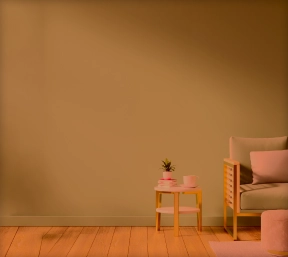TRENDING
House painting
Painting Home
10 Mistakes to Avoid While Painting your Homes!
Covering up errors is difficult; especially when it comes to big tasks like painting homes which have many small details to consider. A little difference in the usage of colour or material can throw the complete look off! Painting walls for beginners is even more challenging as they lack experience and are bound to make at least one painting mistake. However, it is possible to avoid these painting blunders by following few painting tips and tricks.

1. PAINTING OVER UNREPAIRED SURFACE
Repairing walls is often skipped to quickly hide scratches, cracks, dirt marks and more. Doing so might seem like a good idea at first, but in the long run painting over unrepaired surfaces leads to bumpy and uneven surfaces. Moreover, walls are highly prone to chipping. A fix here is to cement holes and sand uneven areas to ensure a smooth surface.
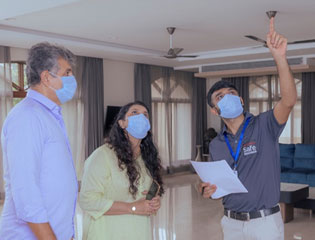
2. FORGETTING TO CLEAN THE WALLS
Dust, cobwebs, grease, and even crayon marks can make the newly applied paint appear unprofessional. Avoid this common painting mistake by using a damp cloth or broom to clean the dirt and ensure a smooth surface to begin your painting work.
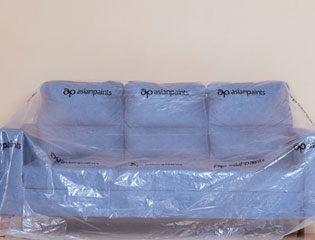
Before picking up any painting tools, it’s vital to protect the furniture and other delicate pieces. This can be easily done by using a plastic sheet to cover sofas, and cabinets as well as other items. Utilize painting tricks used by professional home painters and gather everything in the centre of the room. This will give you more room to move around the area without worrying about spillage or accidents.
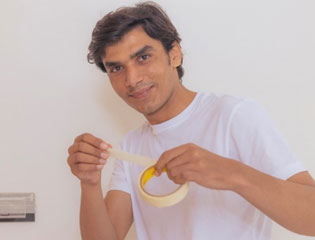
4. PAINTING WALLS WITHOUT TAPE
Taping corners of the walls before starting with the paint job is tedious but essential. It will result in finer and cleaner edges, especially in areas which require protection for doorknobs, frames, etc. However, be gentle and remove the tape in the next 60 minutes after the paint is applied to avoid paint peeling along with the tape.
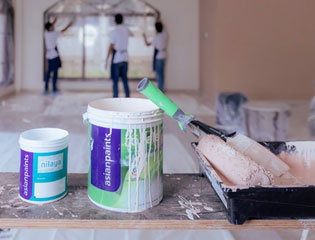
5. SKIPPING THE PRIMER
Also known as the undercoat, primer is used as a base on surfaces before the actual paint is applied. It is especially needed in case of dark or light colours being painted over each other as they seal the paint and increase durability. Primer is also a must for glossy walls to avoid chipping and for unpainted wood as they are absorbent. It conceals stains and odour too.
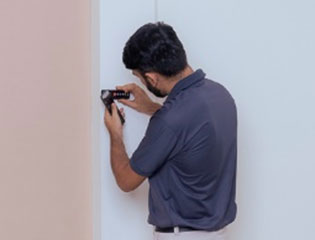
6. USING WORN OUT MATERIALS
Painting walls for beginners naturally requires more effort or precaution. While choosing paint colours, sticking to a can of old paint or brushes that have a few bristles left is unacceptable as only correct materials get you smooth finishes. For one, use synthetic brushes to apply oil-based paints and give latex coats with a polyester brush. Make use of thin brushes for corners that require detailed painting.

7. APPLYING PAINTS WITHOUT PRIOR TESTING
Simple yet skipped under many painting tips and tricks – testing paints with samples. Wall combinations depend on the surrounding atmosphere, natural light, and type of room and should also complement one’s personality. Save yourself from last-minute disappointments with prior paint testing. Choose an empty wall and swatch as many colours to give you a better idea of possible combinations that would work. You can also render the help of online digital tools to see a mock-up of your existing space in the desired colours.
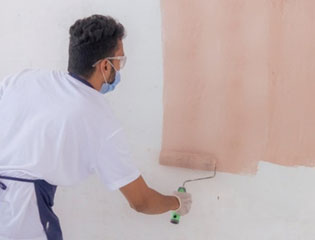
8. APPLYING TOO MUCH PAINT
Brushing walls with a roller will let you paint hard-to-reach areas easily. But using a roller or brush requires precision. For a perfect painting process, avoid fully immersing your equipment in paint cans. Instead, lightly dip the brush or roller and choose one column on the wall to spread the paint in an up-and-down motion.
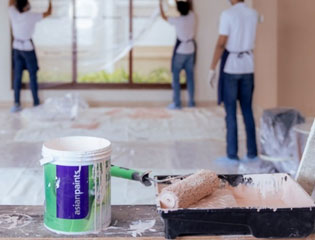
9. APPLYING A SECOND COAT WITHOUT SUFFICIENT INTERVALS
Wait for the first coat of paint to dry and only then give your walls a second coat. Painting twice ensures that the older paint doesn’t bleed through and cause chippings. Additionally, second coats make the paint look better and last longer.
10. EXCESSIVE OVERBRUSHING
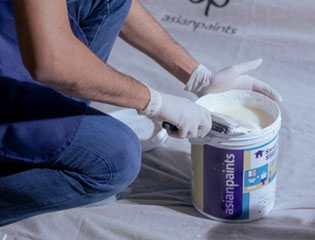
Consistency is a lot harder to achieve while painting. Even after getting perfect results, a paint job can be easily ruined by overbrushing. Brushing paints again on dry areas of newly coated walls can make way for visible strokes and marks. It is better to be patient and wait for the paint to gradually form a uniform finish.
Many instances like these have been learning experiences, even for professionals. With these ten painting tricks in mind though, it will be easy for you to finish the job flawlessly. Under our last painting tips and tricks, we suggest viewing painting videos and observing painting methods for more knowledge.
While choosing paints is fun, painting work can be tedious. Not to worry though, you can always explore professional options like Asian Paint’s Safe Painting Services. By choosing a credible service like Asian Paints, you can be assured of a definite timeline of delivery along with other perks like sanitation, safety a,nd access to experts for quick and trustworthy advice.
LIKE THIS ARTICLE
Give us a thumbs up!

TEXTURE FINISH










